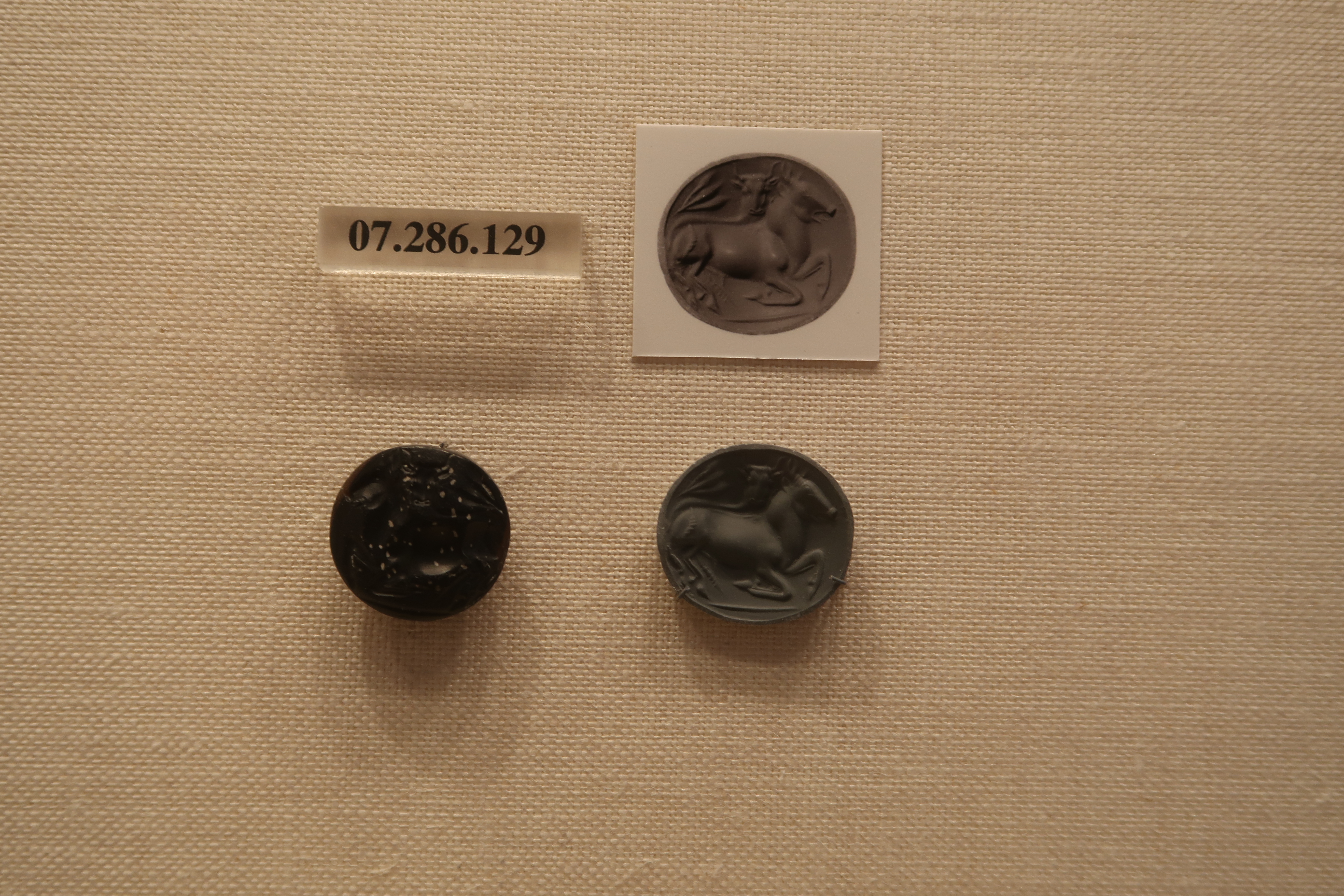Bring back the incuse designs
 LJenkins11
Posts: 828 ✭✭✭✭✭
LJenkins11
Posts: 828 ✭✭✭✭✭
After purchasing my first Indian Head my first thought was ...is there are design reason why incuse coinage did not catch on? I would think the device would last longer as it is sunk in but I don't actually have anything to back that up. Either way, I like the design. How would it fair if modern pocket change incorporated incuse design? Opinions welcome.


10
Comments
Aren’t you concerned about the coins retaining germs!?
If the incused Pratt design is ever issued for a $5 gold commerative, I definitely would purchase one or two.
I thought the Inno-buck would be a good one for that.
My Saint Set
The Pratt coins (really Strurgis Bigelow's idea) were subject to excessive wear. The high, flat field abraded much faster than a coin with rims and raised designs.
The coins as manufactured had no defined rim and many looked as if the design was going to fall off the coin. (Evidently, the half eagle patterns had a narrow rim, but the only survivor was sold off anonymously by the Boston Museum of Fine Arts to which Bigelow had donated it. See Renaissance of American Coinage 1905-1908 for details.)
PS: The design is not "incuse;" it is "sunk relief."
I believe the current Lincoln cent has an incused design on the shield
Dead Cat Waltz Exonumia
"Coin collecting for outcasts..."
.
@RogerB.... I respect your inputs and have no doubt you have justification for the term "sunk relief". However, since the dictionary defines 'incuse' as...'adjective; hammered or stamped in, as a figure on a coin.'... Why would it not also be correct?? Cheers, RickO
The idea of new designs with a sunk relief (I always thought it was called an 'incuse relief') sounds like it may offer some interesting possibilities.
However, the US Mint should stop bringing back designs. Create new 'classic' designs. There are a lot of talented medallic artists. Stop the numismatic retreads.
See http://www.doubledimes.com for a free online reference for US twenty-cent pieces
From the Red Book
" The coin has no raised edge and the main devices and legends are incuse. "
Nope. The definition is correct, but usage for the Pratt QE and HE is incorrect. If the coin's design were incuse, the coin would look like a die.
Pratt (on Bigelow's insistence) sculpted the design in normal relief, then raised the field (or 'table') so that it was at the top of the design's relief. Thus, the relief was sunken below the field, but still in conventional raised form. (Inscriptions look odd because the raised character also has an outline.)
This technique was very common in ancient Egyptian wall carving -- A rough stone wall was coated with plaster and smoothed. The artist then drew the design on this surface, and cut the outline into plaster. He then carved the design exactly as if he were working in normal raised relief. Pratt worked in a similar manner on his plaster models.
The term "sunk relief" comes from archeological use.
I've used the term "intaglio" to describe these.
A fun little numismatic correction referenced in all the books about BLP’s incredible design, but more commonly referred to as ‘incuse coins’ 🙂
These are my favorite coins.
since I'm not an Archeologist I think I'll stick with incuse while Roger tries to correct the Numismatic dictionary. I certainly hope that no other coins are issued as "incuse" because the ones we have are sort of unique and special.
So what's the grade?
I am not familiar with the Pratt QE and HE or Bigelow's influence. Any pictures to illustrate these that could make the light bulb turn on?
Canada has issued an incused 2019 Maple Leaf


IMO, the incuse Indians are a nice "sideshow." True unc's are very attractive. I wonder how they would have looked as "normal issues." Anyway, while incuse parts of coins are nice design "touches," I personally hope no country tries this "exercise" again!
We have a modern Morgan and Peace dollar program these days and I think the hobby is better off for it.
I wonder if incuse relief would work better on clad coinage which has taken longer to wear down rather than gold coinage which is softer.
Except on the edge of the coin
Lafayette Grading Set
They did, but I don't. Paper is a bigger problem, such as it is.
More so than Buffalo Nickels where whole legs disappear. I think it was the opposite. The only way to keep this delicate design was to have it below the surface of the coin. It is gold so it is soft. But high devices always wear first, and we have lots of dateless SLQ and IHN as evidence of this.
>
Lovely nugget! Thank you.
That is probably accurate. These ancient greek gemstones are incuse -
at about 2:10 into this video
https://www.youtube.com/embed/bmeRuQ6uKrM?list=PLvfUGFA8D5RlNHUGiVBhNDvUqhBbukEDm
This is prior to coinage.
http://www.mrbrklyn.com/images/2023_01_met/IMG_0052.JPG

http://images.mrbrklyn.com/2023_01_met/IMG_0050.JPG?width=1024
I once read they had stacking issues; didn't stack equally with their Liberty predecessors.
fka renman95, Sep 2005, 7,000 posts